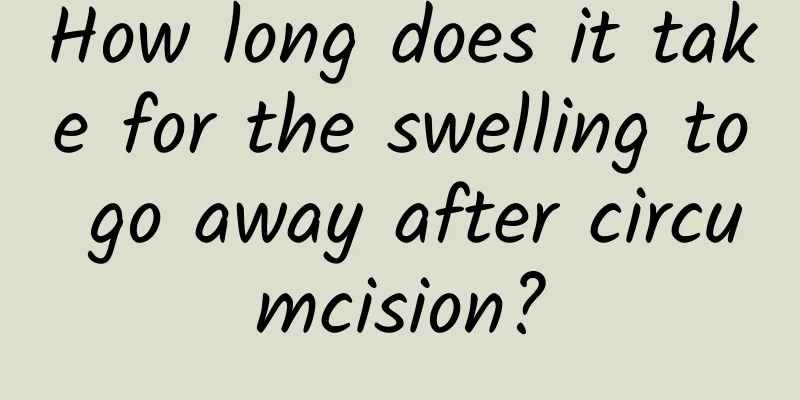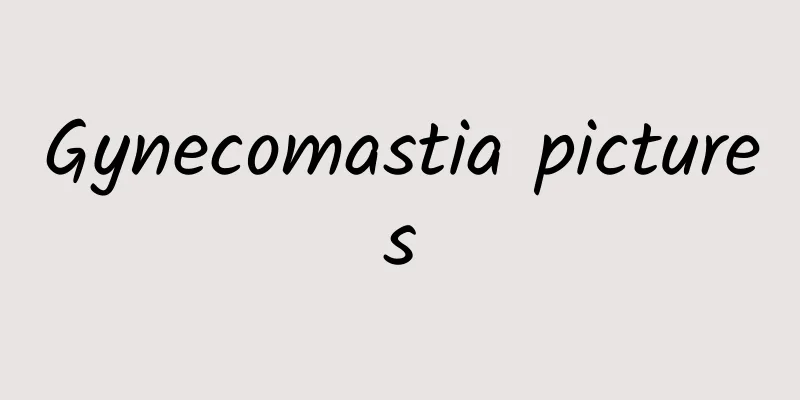What are the steps for testicular puncture?

|
Many people don’t know what testicular puncture is, which is also called testicular biopsy. In fact, testicular biopsy has two main functions. The first is to play a diagnostic role. For some diseases in the testicles, the condition may not be known by ordinary methods, but through testicular puncture, you can understand it clearly. The second function is treatment. During the operation, treatment can be carried out after the diagnosis of the condition. The detailed process of testicular puncture is introduced in detail below. First, open biopsy After the scrotal skin is disinfected and anesthetized locally, the testicle to be examined is fixed by hand, the surface scrotal skin is tightened, and a site with few blood vessels is selected to make an incision of about 1 to 2 cm. The incision passes vertically through the skin, endometrium and sheath. A "∧"-shaped incision of about 0.5 cm long is made in the testicular white membrane. The testicle is gently squeezed to expose the testicular substance. A little testicular tissue is taken as a specimen and sent to the pathology department for pathological examination. Strict disinfection and careful operation are performed during the operation, which generally does not cause infection, hematoma or pain. A small number of patients have a decrease in sperm count in a short period of time after the testicular tissue is taken, which can gradually recover in about 4 months. Cut the skin and testicles, and take out the seminiferous tubules in the testicles. This way, the collection is very complete, and can accurately reflect the spermatogenic function of the testicles, without any errors in the examination, and the results are reliable. However, this examination method is very invasive, requiring incision of the skin and testicular white membrane, and sutures and removal of stitches after the operation, which brings more pain and inconvenience to the patient. Although this examination method is accurate, it is not easy to carry out clinically due to the great pain and the patient's fear of surgery. Second, puncture method Use a puncture needle and syringe. After routine skin disinfection and anesthesia, puncture the needle through the scrotal skin into the testicle, pull out the needle core, aspirate the syringe to obtain a small amount of testicular tissue, and then remove the puncture needle. If the amount of tissue extracted at one time is too little, you can aspirate multiple times from different parts. After the end, bandage the puncture site and send the testicular tissue for examination. Compared with the incision method, this method is less damaging and painful, and does not require sutures. Its disadvantage is that needle aspiration cytology can only obtain a small number of tissue cells and cannot see the overall structure of the tissue, so it cannot accurately reflect the testicular spermatogenesis function, and there are errors of false positives and false negatives. The test results are unreliable and prone to misdiagnosis. Third, testicular tissue puncture sampling method After disinfecting the skin with 1‰ Sanitizer, perform spermatic nerve block anesthesia with 2% or 1% procaine, 10 ml on each side, to reduce the discomfort during testicular fixation and compression. After fixing the testicle, disinfect the puncture site with iodine, perform infiltration anesthesia and deep anesthesia in the avascular area, and then use the vas deferens dissection forceps to select the avascular area to pierce the skin and endometrium, expand the puncture hole to about 0.7cm, and reach the surface of the testicular tunica vaginalis. Then use the tip of the dissection forceps to pierce the testicular tunica vaginalis wall and viscera (testicular white membrane) to a depth of 0.5cm, and then use the spreading forceps to separate it to a small opening of 0.5-0.7cm. At the same time, use the fingers that fix the testicle to slightly squeeze the testicle so that the testicular tissue protrudes from the small opening, quickly pull out the dissection forceps in the testicle, and use ophthalmic surgery to cut a small piece of testicular tissue and send it for biopsy. Fourth, rapid testicular biopsy This method is a new method that Director Yuan Weiqing has further improved on the above traditional method. Its operation is not as traumatic as the incision method, but the testicular tissue removed is intact and can accurately reflect the spermatogenic function of the testicle. The specific operation is to use special instruments to remove the complete testicular tissue without cutting the testicle. This has the advantages of less damage of the puncture method and the advantages of very accurate examination of the incision method. And it avoids the shortcomings of the above methods. This operation is fast (the operation is completed in a few seconds, which is one-two-hundredth of the time of conventional testicular biopsy operation), less painful, no bleeding during the operation, no need for suturing and suture removal, fast recovery after the operation, and the complete tissue is obtained to fully meet the requirements of pathological examination. Now, the rapid testicular biopsy method has been used to examine thousands of patients with azoospermia, and the results are very accurate. Skilled operation and simple method have minimized the pain of patients. Fifth, the surgical steps of rapid biopsy method: ⒈ Routine skin preparation and disinfection of the surgical area. ⒉Fix the testicles. The doctor should select one testicle according to the need and use the left middle finger, ring finger and thumb to fix the testicle firmly. The epididymis end of the testicle should be on the palm of the hand. Hold the testicle under examination with your hand, tighten the scrotal skin on the surface, ⒊ Local anesthesia. Select a relatively avascular area and apply local anesthesia. ⒋ Surgery. After successful anesthesia, a special testicular biopsy tool is used to quickly remove the seminiferous ducts in the testicle in steps, and then the specimen is placed in a fixative to apply pressure to the surgical site to stop bleeding. The amount of bleeding is very small, or even no bleeding. No sutures are required, and bandages are required after the operation. ⒌Postoperative treatment. Oral anti-inflammatory drugs were used for 3 days, and the tape was removed after 3 days. No incision was left after the operation. No obvious sequelae were found. ⒍Specimen observation. A professional doctor will personally view the film and make an analysis based on the patient's condition. |
<<: What causes anal hair in men?
>>: What are the treatments for epididymitis?
Recommend
What tests should be done for male sexual dysfunction?
Male sexual dysfunction is a very serious disease...
What are the symptoms of cavernous body damage?
If the corpus cavernosum is damaged, it will actu...
What is the standard for prostate size?
Not only women, but men are also animals that nee...
What are the fruits that nourish the kidneys? Lychees and grapes are the first choice
As people pay more attention to the way of regula...
What are the foods that can nourish the kidney and strengthen yang in traditional Chinese medicine?
Kidney deficiency is actually very common in dail...
Will staying up late cause you to get angry? Four tips to prevent it
Office workers living in big cities look very gla...
Man with a knotty nose
Nowadays, more and more people are pursuing beaut...
How to control impotence
In recent years, more and more men seem to suffer...
What is cough and testicular pain?
The human body is prone to coughing after respira...
Itching in the coronal sulcus of the penis
Some men feel very embarrassed to tell others whe...
Will I get sick if I lick a woman's private parts?
In real life, many men and women want to try some...
Scrotal itching solution
Scrotal skin itching is a disease that many men a...
There is a pus bag at the base of the penis
The blister on the penis is usually caused by fol...
Treatments for male pattern baldness
I believe everyone knows the importance of hair t...
Is testicular effusion a serious problem?
Testicular effusion is a common male disease. Whe...









